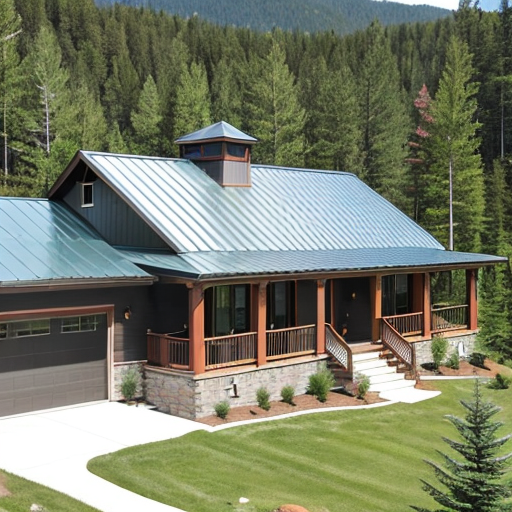Exploring Roof Strength: Metal Roofs vs. Shingled Roofs in Challenging Northeast Weather
When it comes to roof strength, various factors come into play, including the choice of materials, installation techniques, and specific roof designs. Both metal roofs and shingled roofs have their own strengths and advantages. Let’s delve into the topic and provide an in-depth comparison, supported by case studies, with a specific focus on the harsh weather conditions typically experienced in the Northeastern United States.
Metal Roof Strength: Metal roofs have gained a reputation for their exceptional strength and durability. Typically constructed using materials such as steel, aluminum, or copper, these roofs exhibit outstanding resistance against a wide range of weather conditions. This strength is particularly crucial in regions prone to severe weather events, such as high winds, heavy snowfall, and frequent storms.
Case Study 1: The Metal Construction Association conducted a comprehensive study analyzing the performance of metal roofs during hurricanes, which are common in the Northeast. The study revealed that metal roofs demonstrated remarkable resilience, showcasing superior resistance to wind uplift and impact when compared to shingled roofs. Metal roofs exhibited minimal damage, while shingled roofs often suffered significant shingle loss and structural damage.

Metal Roofs are strong and durable
Case Study 2: Another notable case study published in the Journal of Performance of Constructed Facilities assessed the durability of metal roofs over a 35-year period, taking into account the region’s challenging weather conditions. The study concluded that metal roofs maintained their structural integrity and weather resistance throughout the observation period, displaying minimal signs of deterioration or need for repairs. The inherent strength of metal roofs played a significant role in their long-term performance and reduced maintenance requirements.
Shingled Roof Strength: Shingled roofs, typically composed of asphalt or composite materials, also possess considerable strength and can withstand a range of weather conditions. While they may not possess the same inherent strength as metal roofs, advancements in shingle technology have significantly enhanced their resistance and longevity.
Case Study 1: The Insurance Institute for Business & Home Safety conducted an extensive study focusing on the performance of asphalt shingles during windstorms prevalent in the Northeast. The study found that properly installed and high-quality asphalt shingles demonstrated commendable wind resistance, effectively withstanding wind speeds equivalent to or exceeding those of many severe storms experienced in the region.
Case Study 2: Another insightful case study, published in the Journal of Architectural Engineering, examined the performance of asphalt shingles under simulated hail impact, a common occurrence in the Northeast. The study concluded that asphalt shingles displayed adequate resistance to hail, with minimal damage observed. Proper installation techniques and the utilization of impact-resistant shingles further enhanced the strength and durability of shingled roofs.
Overall, both metal roofs and shingled roofs have proven their strength and ability to endure various weather conditions. Metal roofs excel in their exceptional resistance to wind, fire, and impact, as evidenced by case studies examining their performance during hurricanes. On the other hand, shingled roofs, especially when installed correctly and composed of high-quality materials, demonstrate impressive resistance to wind and hail.
It is crucial to note that roof strength also relies on factors like material quality, proper installation practices, and adherence to building codes and standards. Consulting with roofing professionals, particularly those familiar with the unique challenges posed by Northeastern weather patterns, is essential when determining the most suitable roofing material. Taking into account local climate conditions and seeking expert advice will ensure the selection of a robust and durable roof that can withstand the harsh weather and safeguard your home effectively.
